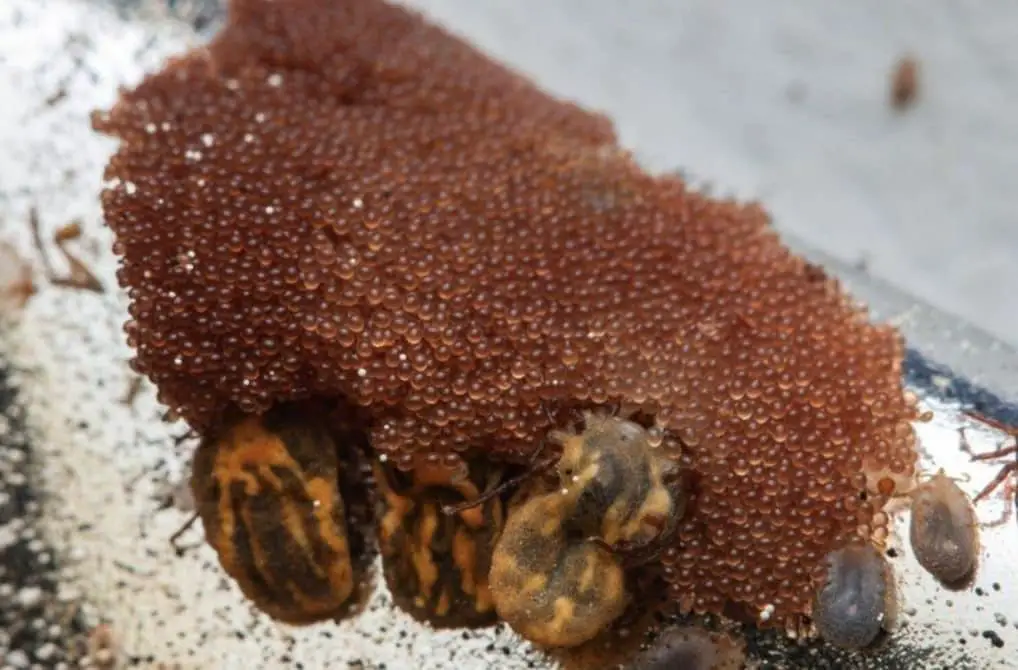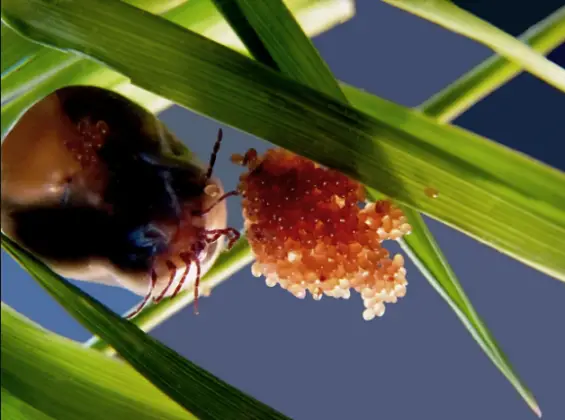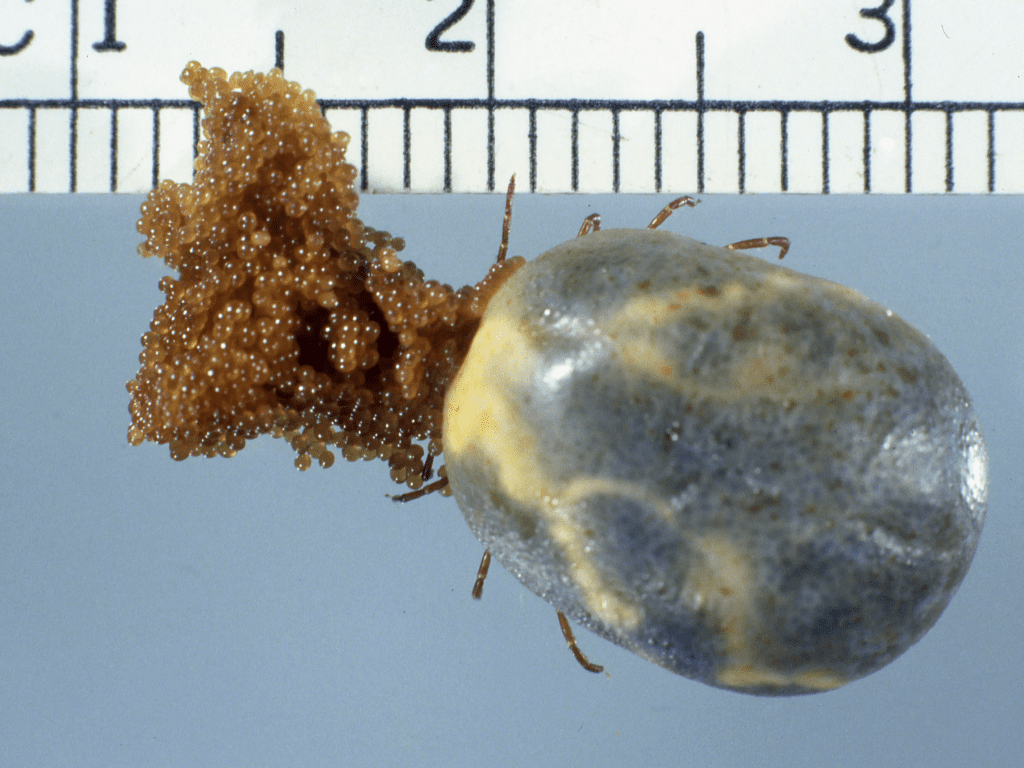Let’s face it—nobody enjoys uninvited guests, especially when they come in the form of pesky insects. Sharing your home with tiny intruders like ants, spiders, or earwigs is one thing, but when it comes to ticks? That’s where many of us draw the line. These creepy crawlers are not just a nuisance; they’re potential health hazards, spreading diseases like Lyme disease and Rocky Mountain Spotted Fever.
Why Ticks Are More Than Just a Nuisance

Ticks aren’t your average household pest. They latch onto their hosts—humans or animals—sucking blood and transmitting diseases along the way. A single tick bite can lead to serious illnesses, making their presence a cause for concern. Unlike spiders or ants, ticks are harder to notice, and their eggs can easily go unnoticed until it’s too late.
Understanding tick behavior and identifying their breeding grounds is your first line of defense. But what about their eggs? Let’s start there.
How to Spot Tick Eggs in Your Yard or Home
Tick eggs are minuscule, about the size of a poppy seed. They’re translucent when newly laid and usually oblong or pear-shaped. Over time, the eggs may become slightly more opaque and turn pale yellow or light brown, with a shiny, smooth appearance.
Where do they hide? Typically, tick eggs are laid in clusters on:
- Low-hanging foliage
- Grass blades
- Leaf piles
- Other damp, shaded surfaces
If you’re spending time gardening or enjoying the outdoors, these are areas to inspect carefully. Spotting these eggs early can save you a lot of trouble later.
What to Do If You Discover Tick Eggs
Finding tick eggs can send shivers down your spine, but don’t panic. Taking swift action is essential. Here’s how to handle the situation safely:
- Avoid Direct Contact: Use gloves to avoid touching tick eggs. Ticks can carry pathogens even in their egg stage.
- Capture and Identify: If you’re unsure whether the eggs belong to ticks, take a sample to your local veterinarian or pest control expert for identification.
- Dispose of Them Properly: Place the eggs in a sealed plastic bag and dispose of them securely. Burning the eggs or submerging them in soapy water is another effective method.
Professional pest control services may also offer solutions for treating tick eggs effectively without harming your surrounding environment.
Proactive Steps for a Tick-Free Yard
Nobody wants to deal with tick infestations repeatedly, so taking preventive measures is a must. The good news? You don’t have to be a landscaping expert to make your yard less inviting to ticks.

Here’s a checklist to get started:
- Remove Tick-Friendly Plants: Some plants, like hostas, azaleas, and tulips, are magnets for deer—a primary tick host. Replace them with tick-repellent options like chrysanthemums, mint, or rosemary.
- Maintain Your Lawn: Ticks thrive in overgrown, damp areas. Keep your grass trimmed and your yard tidy to eliminate their hiding spots.
- Create Dry Barriers: Ticks hate dry, sunny environments. Spread mulch or gravel around play areas, patios, or any high-traffic zones to deter ticks from venturing too close.
- Secure Woodpiles and Clutter: Ticks love damp, dark spaces. Keep woodpiles elevated and clear away unnecessary debris.
Using Natural and Chemical Tick Repellents
Sometimes, even a well-maintained yard needs an extra layer of protection. Natural tick repellents are a great starting point. Essential oils like cedarwood, eucalyptus, and lemon balm can deter ticks without introducing harsh chemicals. Simply dilute the oils and spray them around your yard.
If natural methods aren’t cutting it, consider using insecticides. Always choose tick-specific products and follow application instructions carefully to avoid harming beneficial insects or the environment.
Keeping Your Home Tick-Free
Ticks don’t just stay outdoors—they can hitch a ride indoors on pets, clothing, or even firewood. To minimize the risk of an indoor infestation:
- Check Your Pets Regularly: Inspect their fur, especially after walks in grassy or wooded areas.
- Wash and Dry Clothing Immediately: Ticks can cling to fabrics, so wash outdoor clothing right away. A cycle in the dryer will kill any hidden ticks.
- Vacuum Frequently: Ticks can lay eggs in carpets and upholstery. Regular vacuuming helps disrupt their life cycle.
The Bigger Picture: Protecting Your Family

Tick prevention isn’t just about avoiding itchy bites—it’s about safeguarding your health and that of your loved ones. By staying proactive, you can reduce the likelihood of encountering these unwanted guests in your home or yard.
Conclusion
Unwanted insects in your home can be an annoyance, but ticks take the trouble to a whole new level. Their ability to spread diseases makes them a serious threat, and their tiny eggs are easily overlooked. Spotting, removing, and preventing tick infestations isn’t just smart—it’s essential for your peace of mind.
So, next time you’re enjoying your backyard or cleaning up your home, keep an eye out for these tiny troublemakers. With a few preventative measures and a little diligence, you can keep ticks at bay and make your home truly your own again. Remember, the best defense is always a good offense when it comes to these pesky pests!


